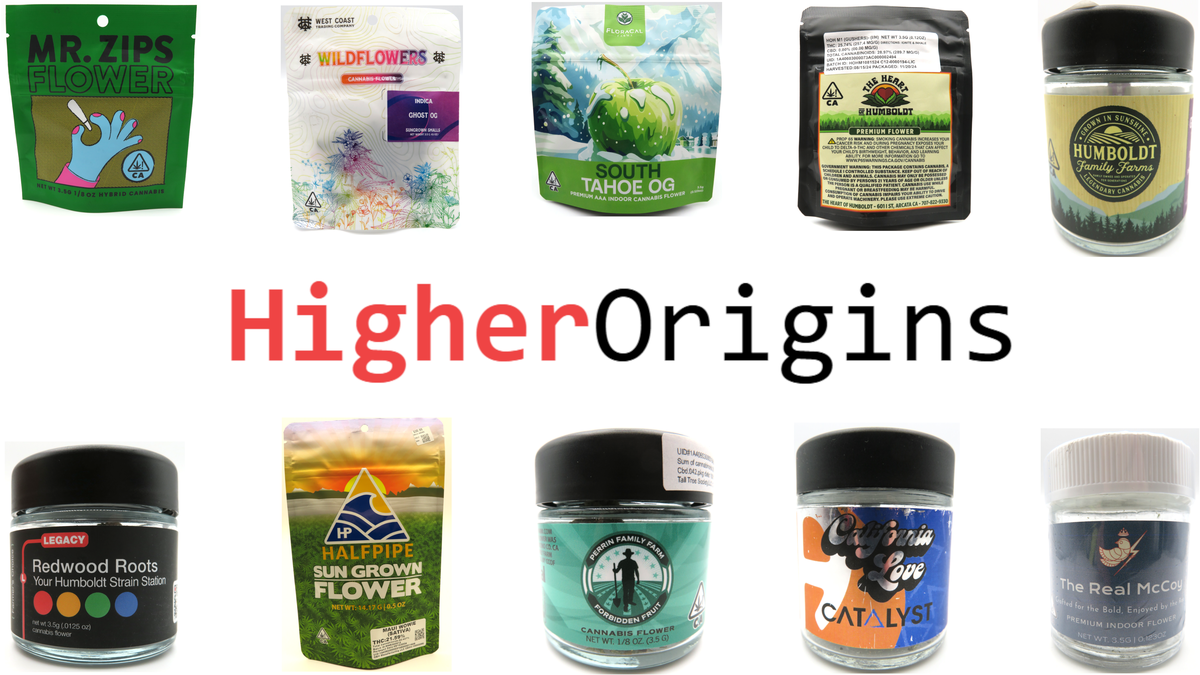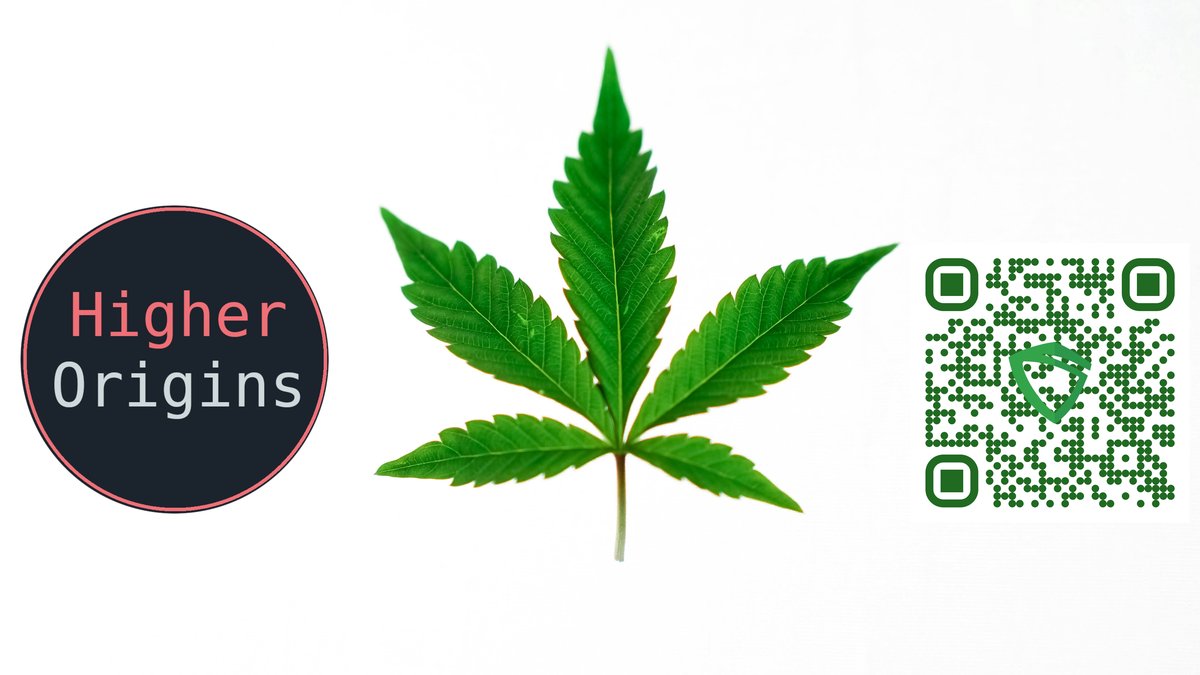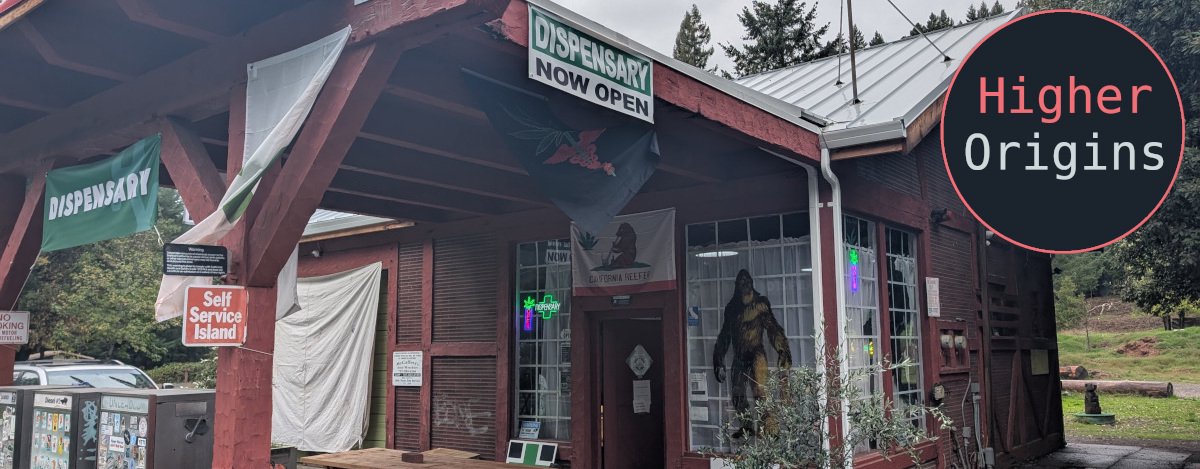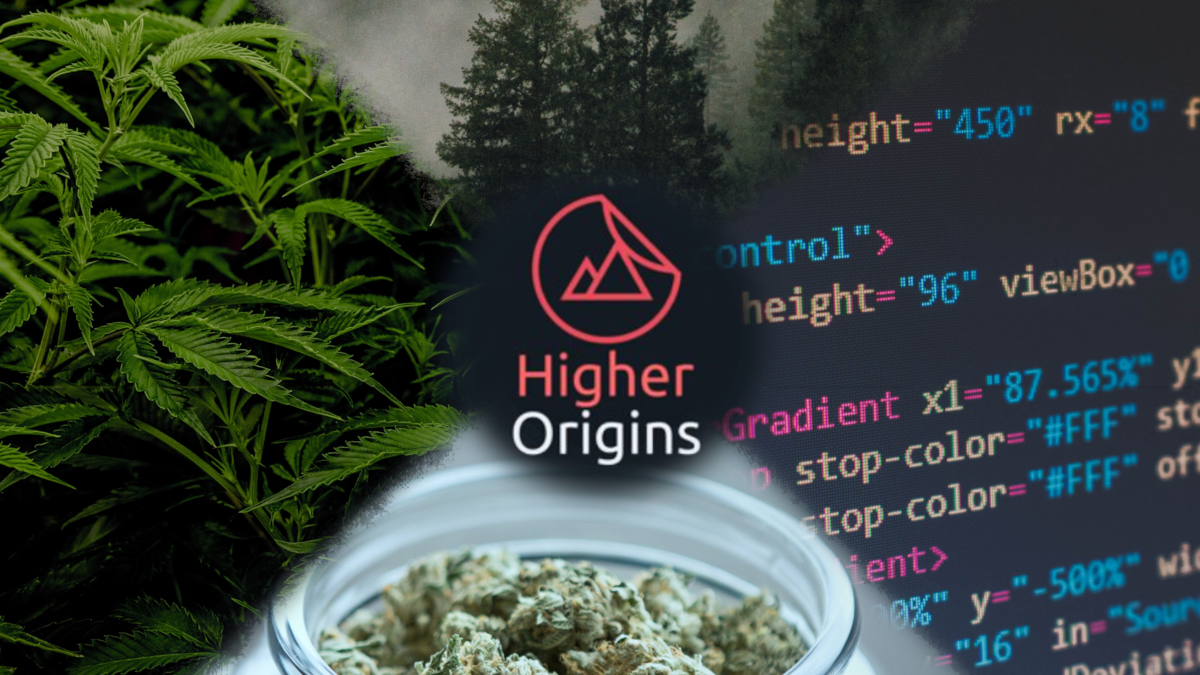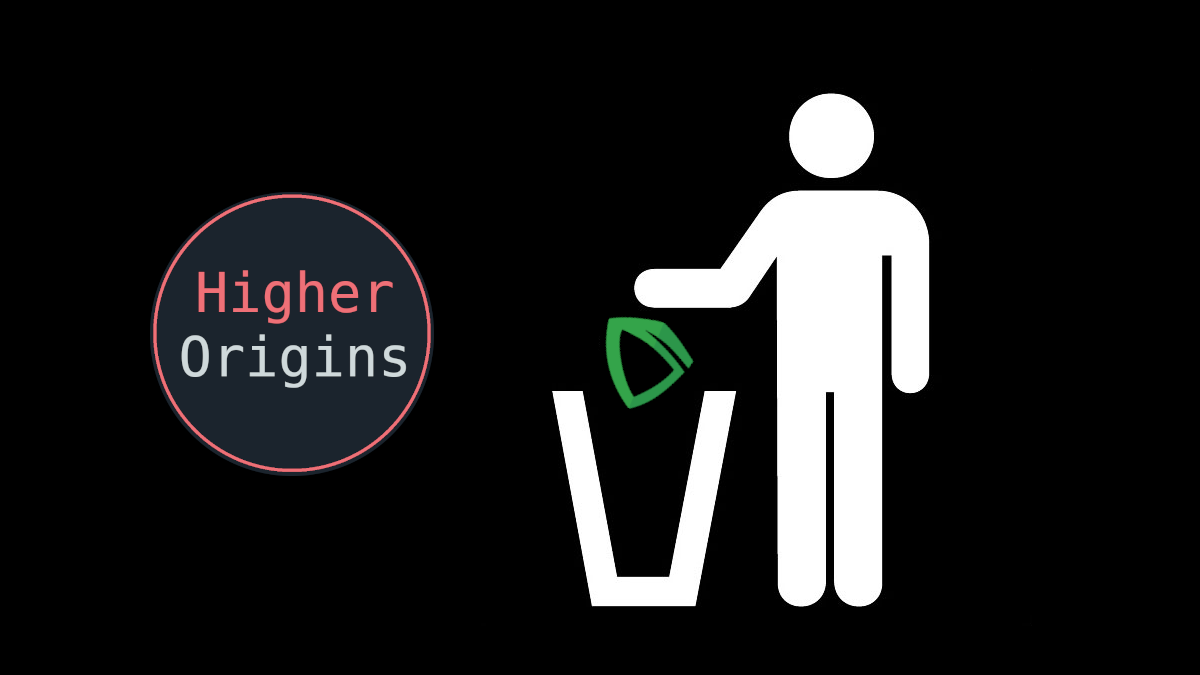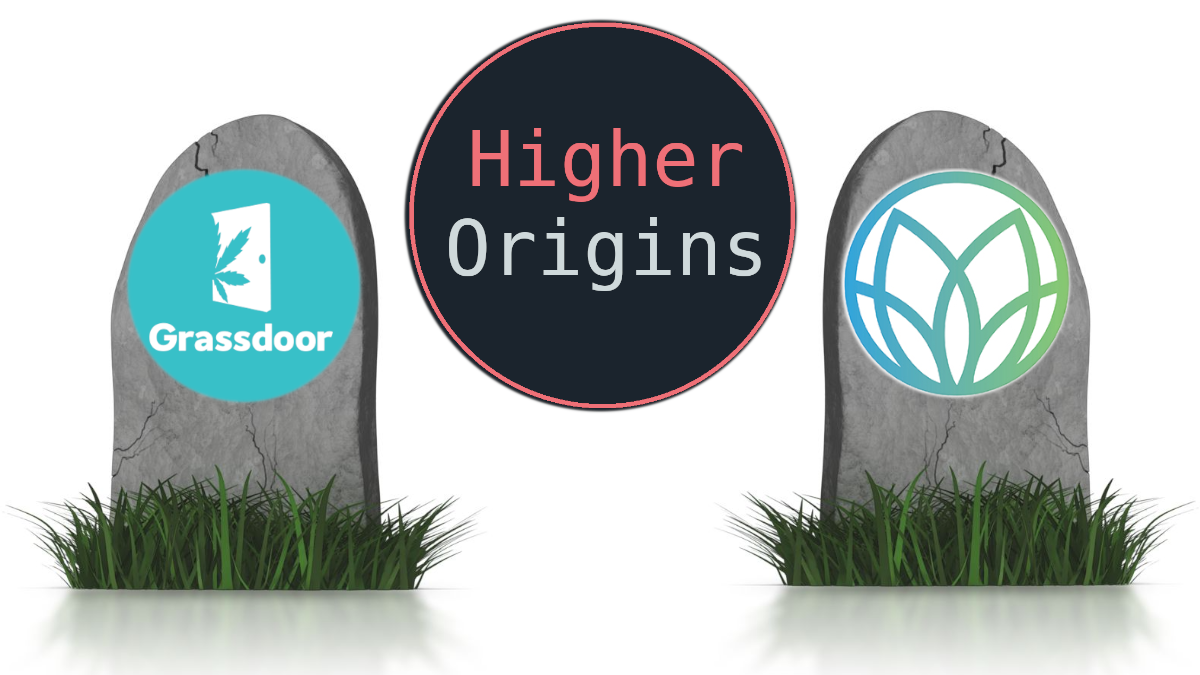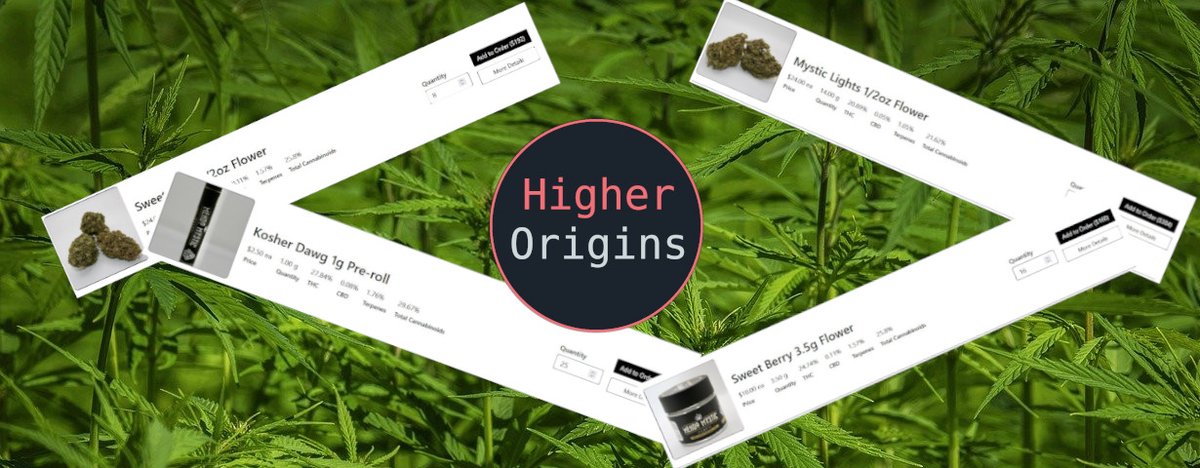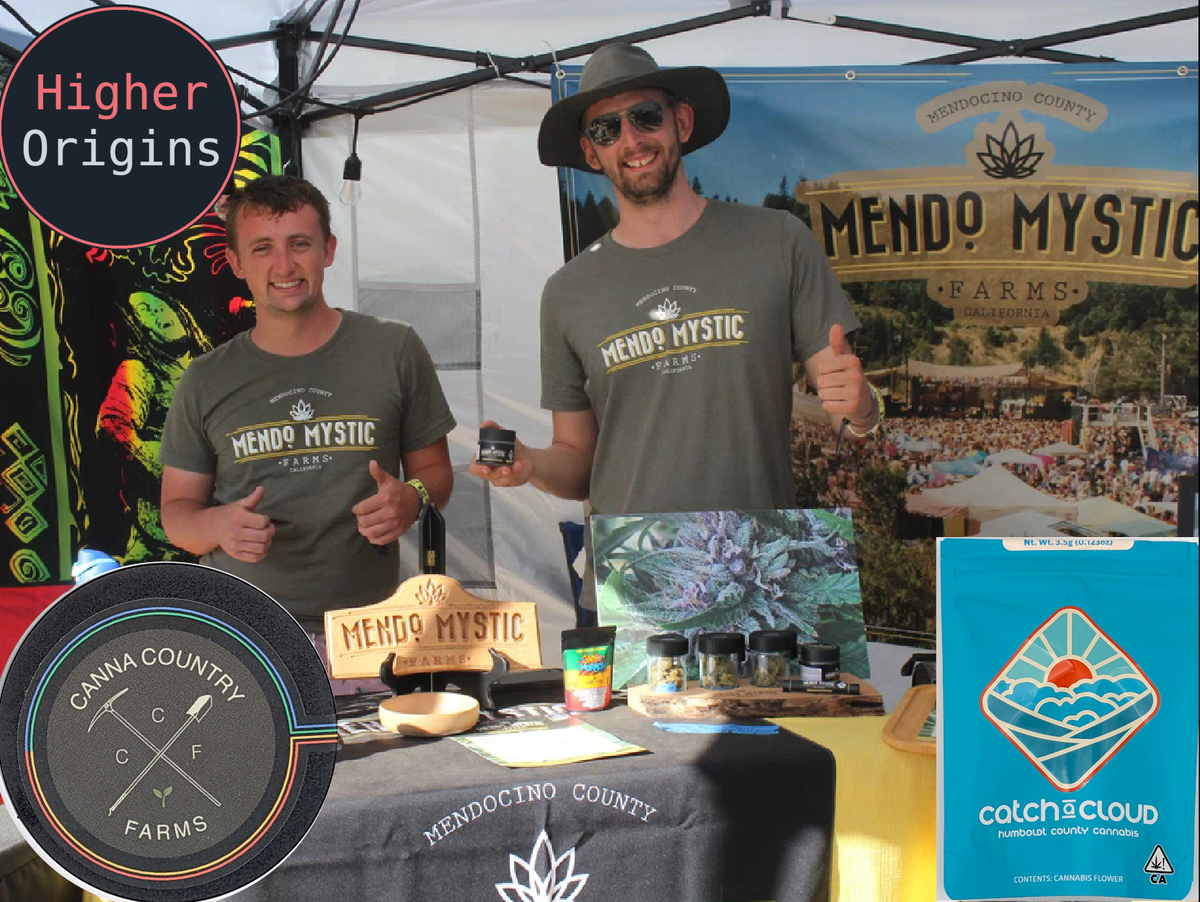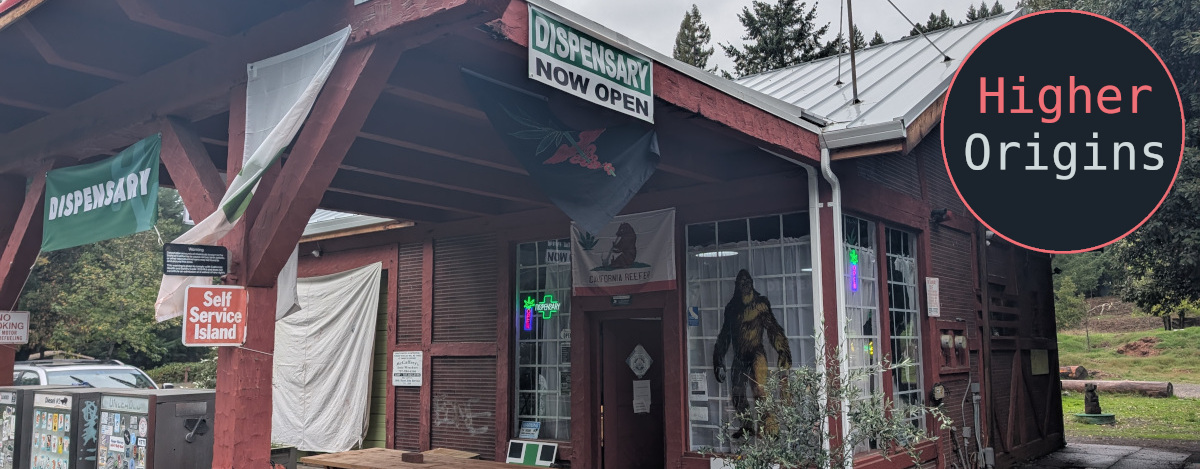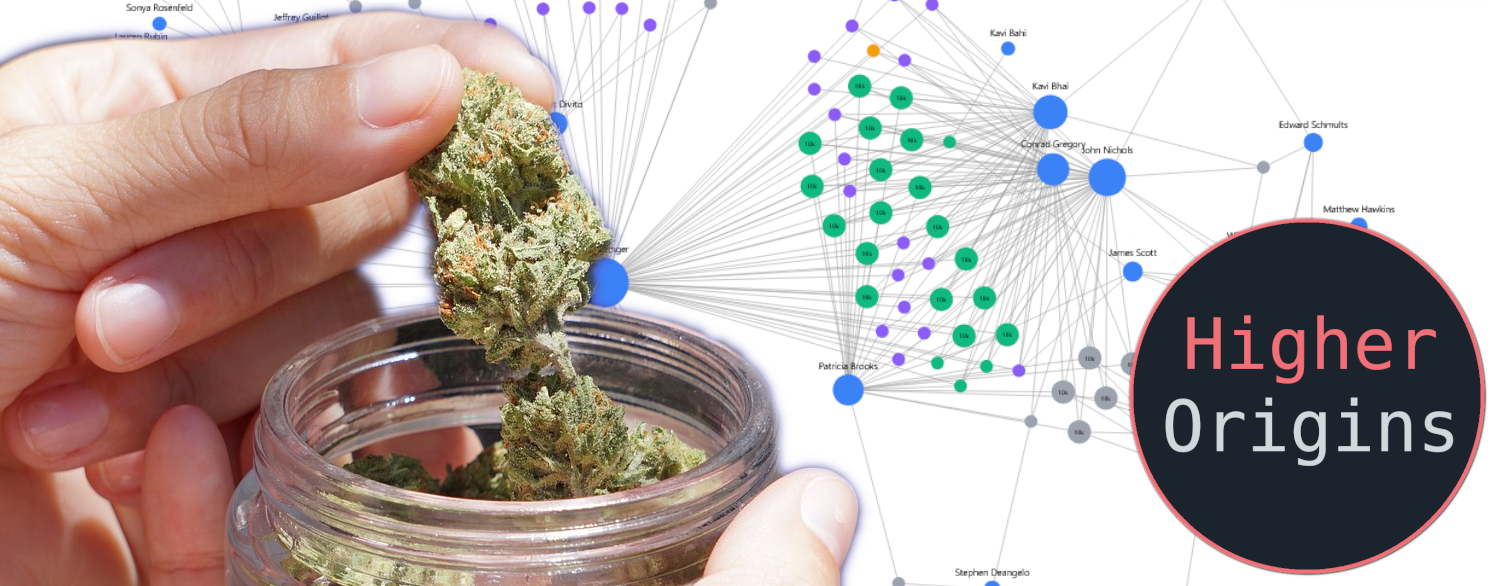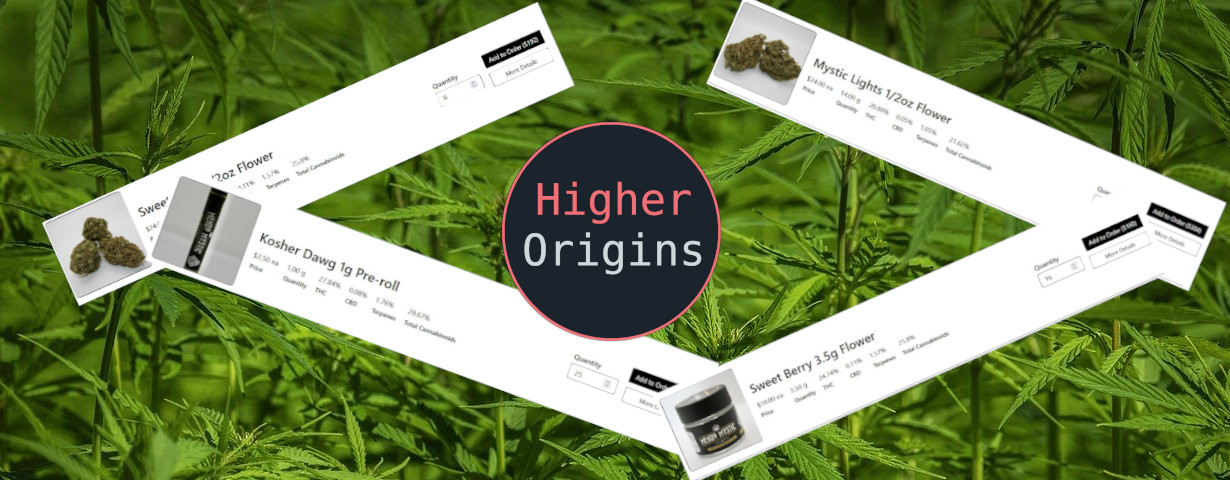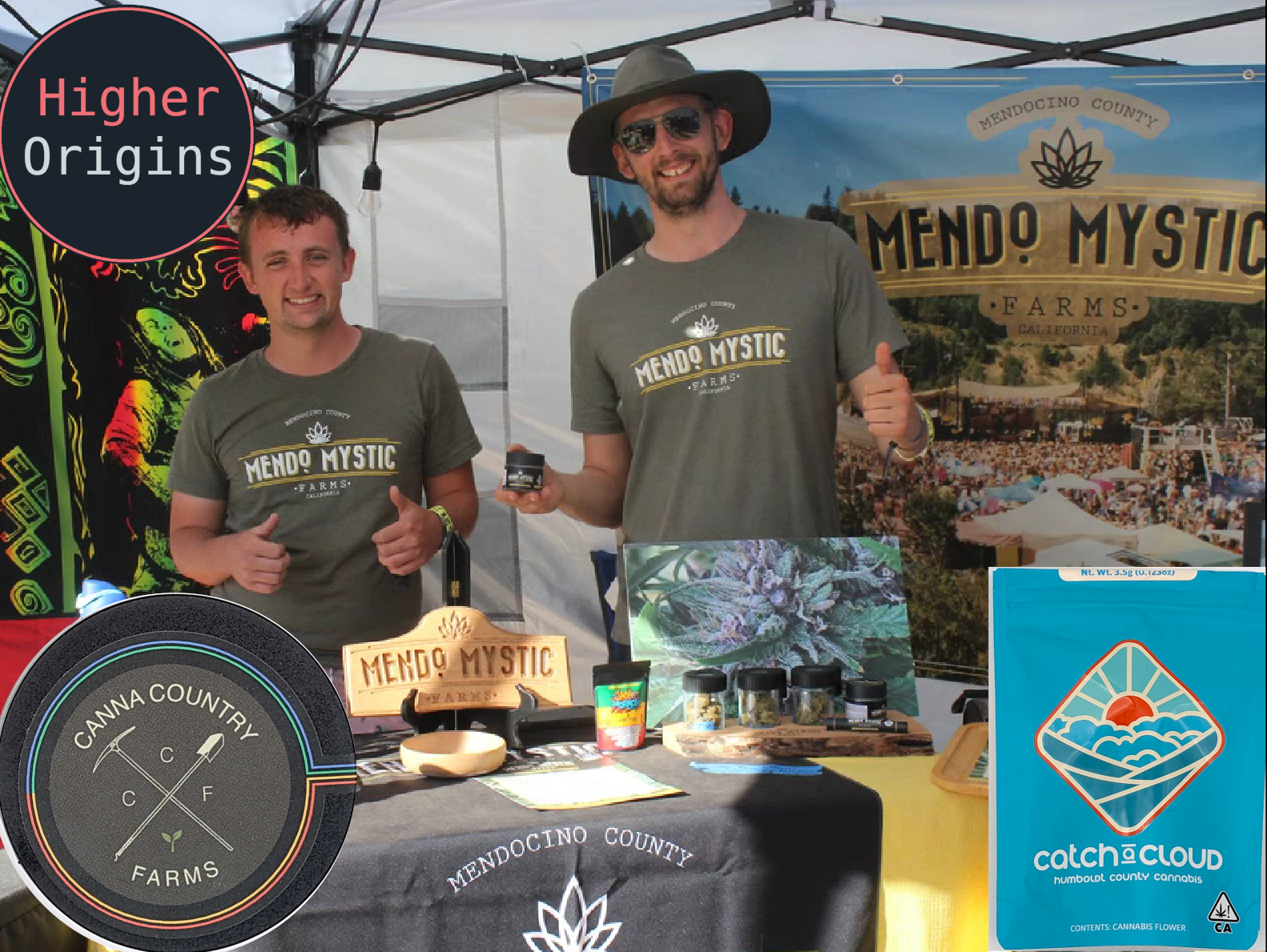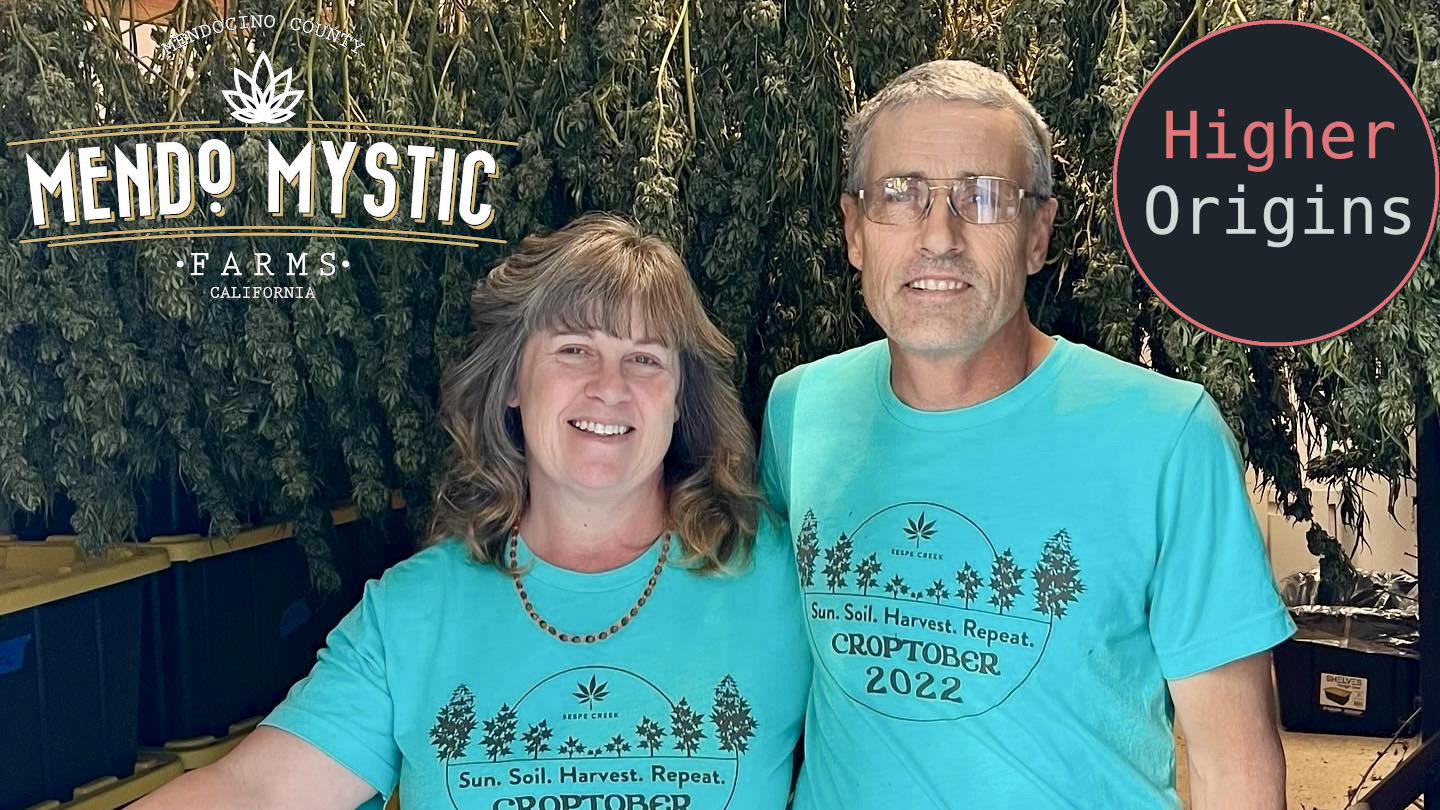In our first half of this series,"The Value of Small Cannabis Farms" we explained the general benefits that sourcing from small farms can have for brands and manufacturers, as well as the obstacles to small farm sourcing and the economics surrounding them. In this second half, we move down the supply chain to focus specifically on how small farm product can appeal to consumers and boost the offerings of retailers.
Picture this:
You walk into your local dispensary, and start up a conversation with the bud-tender. They tell you about the new shipment, some Skunk #1 from the farm up North, grown by some people who’ve been growing since the 70’s. They offer you a sniff from the jar, and the nose definitely knows- you want some of that. The budtender goes into the back and prepares your order, down to the gram. You walk out of the dispensary with fresh bud from the same batch you smelled, and a greater understanding of the kinds of weed available to you.
If you never visited a California dispensary before prop 64 you might be unfamiliar with this experience but it was the norm for quite a while before the new laws came into effect.
Now, there’s no smelling, very little idea of where your weed was grown or when, no just-right order sizes, and little to no idea of the story behind who grew it.
Gone are the days where small farms could ship a turkey bag full of fresh harvest to a dispensary and negotiate their price at the door with cash in hand. The new paradigm is one of separation: of time, distance, financial responsibility, and consumer connection to the terroir of their cannabis.
Today, to get their crop to market, farms have to invest in packaging, marketing, phone tag, and administration, while having less cash than ever before. Most “mids” on shelves started out months ago as top shelf before it sat in a distro’s warehouse, losing potency while the distro waited for a profitable brokering opportunity and ignored the farm’s phone calls. Genetic diversity on retail shelves has shrunk, with most consumers having to choose between the same handful of strains with different brand labels- with nobody knowing what they’re actually buying. These days, a good chunk of the retail market is more about a store getting a good deal from a large brand, and then juggling invoices for months while the product on their shelves runs a race between selling and expiring.
We knew the transition to legal wasn’t going to be easy- there was a sense of impending change in the early 2010’s in the Emerald Triangle, old timers and young guns alike were largely aware of the change on the horizon. But nobody expected this level of disconnection and alienation.
So, here we are, in 2023, trying to bridge this gap. How do we do it?
It starts with the consumer.
Let’s first consider how legal cannabis customers can be categorized by comparing with a roughly comparable herbal drug industry- coffee. Coffee is a stratified industry- from the discount Folgers instant your grandpa buys because he wants the cans to store nuts and bolts in, to fair trade fresh roast from the depths of the global South served in the comfiest cafes. These are clear consumer categories, we all know someone in each category, and can easily place ourselves into the category we fit in. The market focuses these consumers with different products, and everyone knows what that looks like. To be clear these aren’t official categories, they’re just for purposes of comparison.
Budget: These customers want it cheap and effective. Whatever does the job at the best price is their usual choice, and they aren’t really aware of or interested in exploring more exotic options. What understanding they do have of the industry is based primarily on popular culture tropes and the most successful marketing campaigns.
Coffee Buying Patterns: If it's bitter, brown, and caffeinated, it’ll do. Generic brands, quantity over quality, and instant coffees are all fine with them. They don’t really have much interest in fancy barista drinks, and usually frequent budget chains.
Cannabis Buying Patterns: What’s on sale is usually good enough. High THC is the rule, and Indica/Sativa/Hybrid are the only styles of weed, any understanding of cannabis remains clearly rooted in popular culture. The idea of the greater supply chain and industry is irrelevant: weed comes from a dispensary and that’s good enough for them. These consumers will usually be perfectly happy to refer to the budtender’s knowledge, so long as they recommend something in their price point.
Standard
The majority of people, who will take the mid shelf options right down home plate. They’re aware there’s a spectrum of quality and they can place most products on it when they try them. For these consumers, the social aspect starts to take hold- they’ll talk about various products with their friends, and become influenced by different trends. They’re aware of higher end products and are potentially interested in them, but still have a budget they’re rarely willing to exceed.
Coffee Buying Patterns: These consumers have started to form some initial brand opinions, both positive and negative, and will sometimes explore similar brands. They’re more influenced by packaging design, and may own a few coffee accessories- the Keurig crowd. Cafe’s are more popular, and discount brands aren’t usually preferred. They’ve heard of things like “Fair Trade” and “single source” and recognize they’re generally good things but don’t really know the details.
Cannabis Buying Patterns: The discount shelf and promo deals aren’t the default, but sometimes they’ll take a good deal if we see it. They’re familiar with a few brands, mostly large ones, and might have opinions on a few of them. They will usually consider the budtender’s recommendation. They’ve heard of terpenes but they’re not something they really understand, CBD content comes into play here and most people understand it has health benefits but aren’t fully informed about it. Sometimes they tune into the different effects from different strains, and can develop a preference based on that, but also often choose products based on the vibe of the packaging.
Fancy
These people want more, not just in quality, but in experience, status, and ritual- coffee or cannabis is part of their style. Preference for quality is strong with these consumers, and they understand which brands can deliver that, and that the marketing appearance and price point of the brand doesn’t always indicate quality.
Coffee Buying Patterns: Cafes are preferred- the smaller, the better, chains aren’t preferred. They’ll buy the expensive beans, and the grinder and fancy press to go with it. Fair trade means something, they have opinions on the region of origin, read the tasting notes, and have clear dislikes. They want to be upsold, if the quality increase is convincing and noticeable.
Cannabis Buying Patterns: They’re aware of the reputations of various brands, can recognize craft when they smell it, and sometimes get annoyed when budtenders don’t know as much about cannabis as they do. They usually have a preference between indoor and outdoor, and can explain why. They know that Indica/Sativa/hybrid is largely a myth, and that terpenes and the entourage effect largely impact the effects of cannabis. Their choices are mostly not guided by pop culture influence, and more informed by their own knowledge.
Connoisseurs
These are the people who go beyond consumption and pursue participation and understanding. Their relationship with the products they like goes beyond style and is a core part of their identity.
Coffee Buying Patterns: You’ll find them timing their AeroPress brew to the second, attending tastings and roasting workshops, and reading about the actual biology of the coffee plant. At this point, preferred brands are mostly irrelevant, outside of individual roasteries and cafes. Details matter. Not just country of origin, but altitude, preparation, and region. Chains are simply out of the question. Price is less influential, they will pay large amounts for what they want if it is specialty and authentic, and they usually know what makes it that way.
Cannabis Buying Patterns: They’ve read Jorge Cervantes, kept notes on what they smoke, have probably grown some themselves, and know what terroir is. Terpenes? Absolutely. Genetics? They know the lineage, and likely some of the history as well. Cure matters, age matters, if they don’t know who grew it, they don’t want it. For the majority, small farm NorCal outdoor or exotic indoor is the rule, resins are always live, hash is an art form. They feel underserved at almost all dispensaries, and mourn the good ol days. They will spend more for quality, and will ridicule brands that have low quality but a high price point.
So, after that oversimplified comparison, how does this tie back to small farms and their connection to consumers? The point is that for all these different market segments, small farms can offer retailers who sell their products advantages in appealing to these different kinds of consumers. As we explain these advantages below, think about how they might appeal to each level of consumer.
The Upsell and Compelling Interest
Why does it make sense for a retailer to put in the extra effort to shop from small farms when some consumers will pretty much buy anything if it’s cheap and does the job? For a subset, absolutely- sell people what they want. However, not everyone is in this category permanently, and the upsell is calling. Having some unique options on the shelves that stand out from the usual stuff can get anyone’s attention and make them ask “What’s that?” These opportunities to introduce people to something new and interesting are the cornerstone of any good sales approach. Now, you might say, why does the product that draws their curiosity have to come from a small farm? Why can’t it be the higher tier option from a corporate farm in a shiny jar? Because if you want to reliably grab the interest of a consumer and get them to explore their options more, you need something compelling, in more ways than one. In a world of dry corporate branding, what’s more compelling than authenticity?
Social Responsibility
There’s still a hell of a lot of injustice in the California cannabis industry. From failed or performative social equity campaigns, to false political promises, to obstructive and discriminatory policies, there’s still a lot of work to be done. What can the average consumer do to support those industry players who have been or are currently being beaten down? Simply put, buy their weed. Most cannabis farms run by minorities or people who have experienced socioeconomic discrimination are small- that’s all they can afford. Consumers wanting to make a difference and contribute to the diversity of the industry need to have access to these products and the stories of their growers. Likewise, dispensaries themselves may want to support these groups as a way to give back to the community.
Sustainability
Small farms are more likely to practice more sustainable and organic growing methods. At a small scale, plant care can be largely accomplished with hands-on effort, while larger facilities may not be able to achieve their economies of scale without greater reliance on chemicals, synthetic fertilizers, and pesticides. Small outdoor operations especially use less energy and generate less waste than pretty much any other category of cannabis growth- the lack of lights to power or plastic hoop covers to replace is a big saver for their carbon footprint. Respect and cooperation with nature has always been a core principle in cannabis culture, a value which aligns perfectly with our increasingly climate conscious world.
Spirituality
Cannabis is practically synonymous with spirituality, whether organized or personalized. A core aspect of the spirituality of cannabis growth that we have encountered time and time again when talking with farmers has been the concept of stewardship: the plant does the work, and it’s the job of the farmer to let it be the best it can be, so it can fully express it’s natural and spiritual potential. Consumers who shop for herb with the intention of using it for spiritual reasons are much more drawn to products grown in this spirit of stewardship in a small farm environment, rather than megafarmed plants optimized for scale and profit.
Expression
With a product as ingrained in popular culture as weed, there’s nearly always an identity and a style choice being made by the consumer, either consciously or unconsciously. There’s a wide range of styles to choose from, and they all serve to communicate to others that the buyer identifies with and is comfortable repping that brand. Whether it’s the street trapper drip of Cookies and their associates, the refined folky but solid quality presented by Mendocino Grasslands, or the minimalist technical medical futurism of Dosist, there’s a style that fits you. But style is personal, and some people don’t want any of the mainstream brands. The endless variety in approach, presentation, and cultivation available from small farms gives people the ability to rep something as unique as they are.
Exclusivity
Hey, do you remember that guy you used to know in college with the really good shit? That stuff was wild huh? Well, it came from a small farm, most likely. And it still does. That universal memory of The Good Shit, and the guy who had it, resonates with a lot of people. By selling the unique offerings of small farms, retailers are offering consumers the opportunity to be That Guy, and the limited harvest size from these farms ensures that they can maintain that exclusivity.
Education
Knowledge of a product is key to selling a product. It’s sad to say, but we really haven’t seen many cases where larger operations put much effort into educating retailers and consumers about their products. They’re there to sell pounds and make profit, once the retailer buys it, it’s their problem, and it’s a relationship largely based on invoices, not knowledge sharing. With small farms, knowledge is a key part of the value proposition, and many small farmers are more than willing to share their knowledge with retailers and consumers. It’s not just the “what” of the products, like strain, cure, etc, it’s the “why” that small farmers are proud to share, since it defines the value and story of their unique product. Forming a collaborative relationship with a small farm pays off in shared information, which helps both the retailer and the consumer learn more about cannabis.
Regionality
A farm’s location means a lot, not just in terms of terroir and its effect on the plant’s expression of its genetics, but in terms of its cultural weight as well. While the Emerald Triangle has been the 200 pound gluey gorilla of California cannabis for decades, this state is huge and regional pride is a selling point, with existing or emerging markets. From the well established indoor bunkers of Oaksterdam to the mountains outside of Santa Cruz, every region has it’s weed, and people who identify with that region will be tempted to buy based on that. Likewise, newly emerging growth regions are curiosities and offer something out of the ordinary. When you think Mono county, you think about the arid wasteland of the 395 corridor or Mammoth Lakes- not weed. But, now that there’s a few cultivators out there, wouldn’t it be interesting to check out their product and see if it’s any good? These growing regional offerings are usually exclusive to small farms, since large operations usually stick to the recognizable regions.
End of the day Economics
Ultimately, not every selling point listed above is going to apply to the clientele of every dispensary. Retailers usually know their customers, and what they buy. It’s easy to buy big brand weed, and it makes a hell of a lot of sense to do so in a tumultuous industry. We’re not saying that every dispensary should only shop from small farms- far from it, variety, grade, and product mix are critical to their success, see the 4 categories we discussed earlier. That said, we do believe that adding more small farm products to inventory, and figuring out how and why they appeal to your customers, is a valuable strategy that retailers can and should explore to differentiate themselves in today’s evolving marketplace. While some specialty retailers can absolutely run 100% small farms, for other’s it’s much more reasonable to maintain only a certain percentage.
How Higher Origins Helps
So how does Higher Origins help connect dispensaries and small farms? Our platform provides visibility and discoverability for small farms to dispensaries. Farms are described with a profile, and terpene profiling tools allow you to compare different strains to find exactly what you need- or something new entirely. Additionally, we give farms the opportunity to tell their stories to potential customers via our farm interview articles. Furthermore, our B2B marketplace allows farms to list their products, and retailers can browse and order them. All product listings are METRC-linked to compliant packages, and the transfer process has been streamlined. Farms and retailers can review each other based on their satisfaction with the transfers they have completed, allowing for a reputation system. This suite of features, with more to come, makes sourcing from small farms a straightforward task.
Conclusion
Ultimately, finding the right product mix for their unique market is up to the retailer, but we know that in this shifting competitive landscape, it can be hard to differentiate and grow. The wide variety of products available from small farms can help bolster retail inventories with new and exciting options to reach customers of all categories, with value propositions ranging from exclusivity and sustainability, to spiritual connection and social responsibility. No matter what your customers are looking for, there’s a small farm out there right now growing something that can fit that demand. We’d like to one day introduce you to them!
How you can Help!
If you’re a California cannabis license holder, sign up today and check out our platform! There’s cannabis to view and order, small farms to explore, and we’re always looking for new partners to expand our model throughout the state. If you’d like to become a supporter, you can help keep the lights on and allow us to more rapidly expand our offerings- check out our support page if you’re interested in donating.
Keep growing, and have a great Harvest!
-Higher Origins


